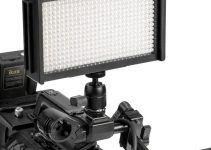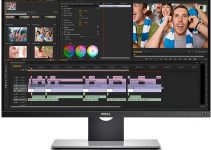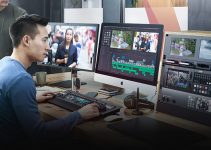The craft of setting up and arranging lights on set is paramount and one of the most valuable assets of your skill set as a cinematographer and filmmaker that also has a major impact on the final look of your projects. It’s your responsibility to create the right mood of a scene that resonates with the story in the best possible way and looks natural to the eye at the same time. Fortunately, there are so many options available today and it has never been easier to use various lights and put them virtually anywhere on set as they become smaller, lighter and a way more efficient.
And, I’m not talking about the standard three lights set up where you throw a Key, Fill and Back Light around your talent following some good old-fashioned rules. Now you can achieve far better results by taking more attention to every small detail, putting smaller or bigger lights across your scene and making it look naturally lit as if you are not using any lights at all.
Here is a simple example how you can easily achieve that by using small LED lights in tight space. Daniel Norton from Adorama will show us a variety of lighting instruments and techniques to light a subject in the tiniest of spaces and also how to hide lights in a shot to create the mood he is going for.
Daniel’s approach to this particular scene is based on setting up the exposure of his camera based on what’s in the background behind his talent, the lights that he can’t control. The main idea here is to have a good balance between the main subject and the background and making sure that there will be no blown highlights in the frame.
The next step is to create separation between the subject and the background by adding a back light behind the talent’s left shoulder. Always think about the practical light sources in your scene.
In this particular case you can easily add a back light because there are already different light sources in the background so using a back light in this particular instance does make sense, and the audience will be easily tricked by that.
A girl sitting in front of a laptop, the perfect set up to hide a light source and place it on the laptop’s screen pointed directly at the talent’s face. The Cineo Machstix 6” LED panel seem to be the perfect match for this scenario. Daniel adds another LED panel at 5600K in front of the second monitor screen on the left side of the talent, so when the talent turns left there is still enough light coming from the second monitor as well.
Finally, as the laptop’s front in the frame is too dark, Daniel decides to throw a 150 Watts Arri Tungsten Fresnel Light to add some texture and liven up the frame even more. This is how the final composition looks like:
The most important takeaway here is that when it comes down to lighting a scene, first and foremost, you should try to break it down and create a visual representation and a scheme in your mind, considering how the possible set up might look like.
Then, you will be able to create the mood of the scene that you are looking for by adding different light sources one at a time. Use the practical lights as your reference points as they will give you a clue how exactly to position and point your lights to make the scene look smoother and more natural as if you’re not lighting it at all.
[source: Adorama TV, via Cinescopophilia.com]
Disclaimer: As an Amazon Associate partner and participant in B&H and Adorama Affiliate programmes, we earn a small comission from each purchase made through the affiliate links listed above at no additional cost to you.
Claim your copy of DAVINCI RESOLVE - SIMPLIFIED COURSE with 50% off! Get Instant Access!





